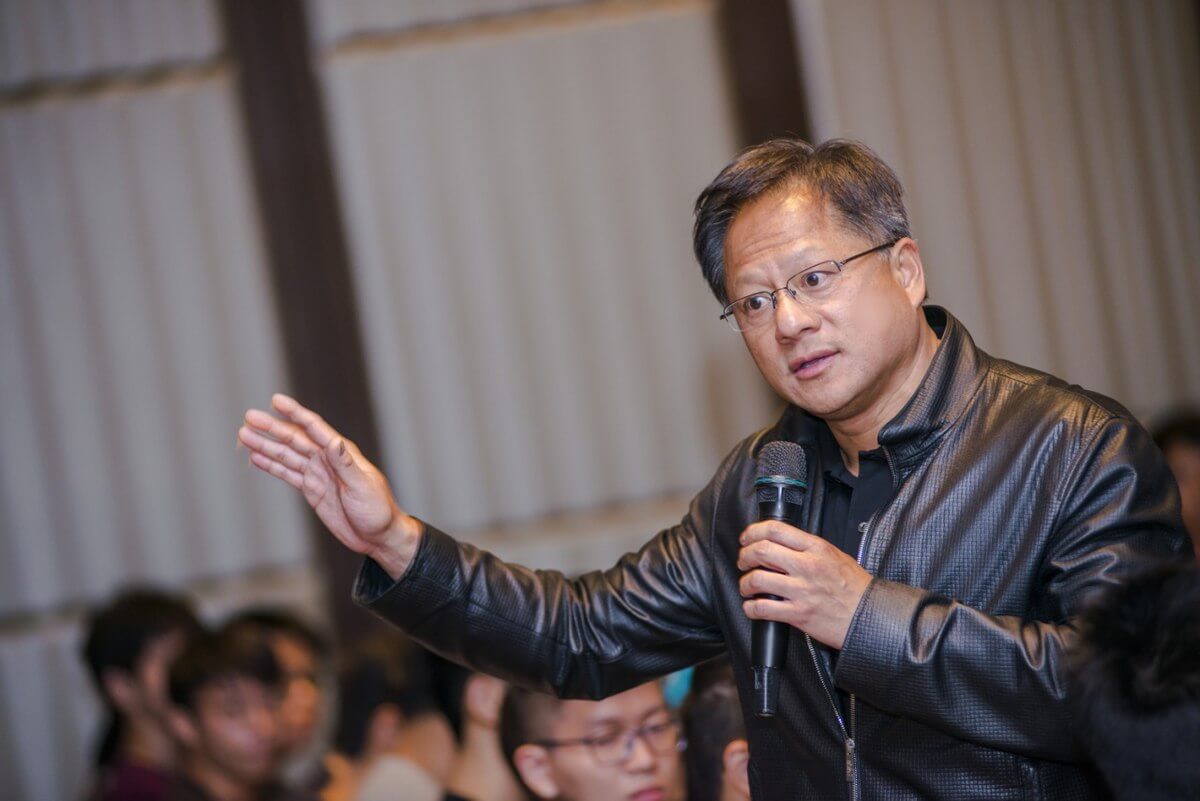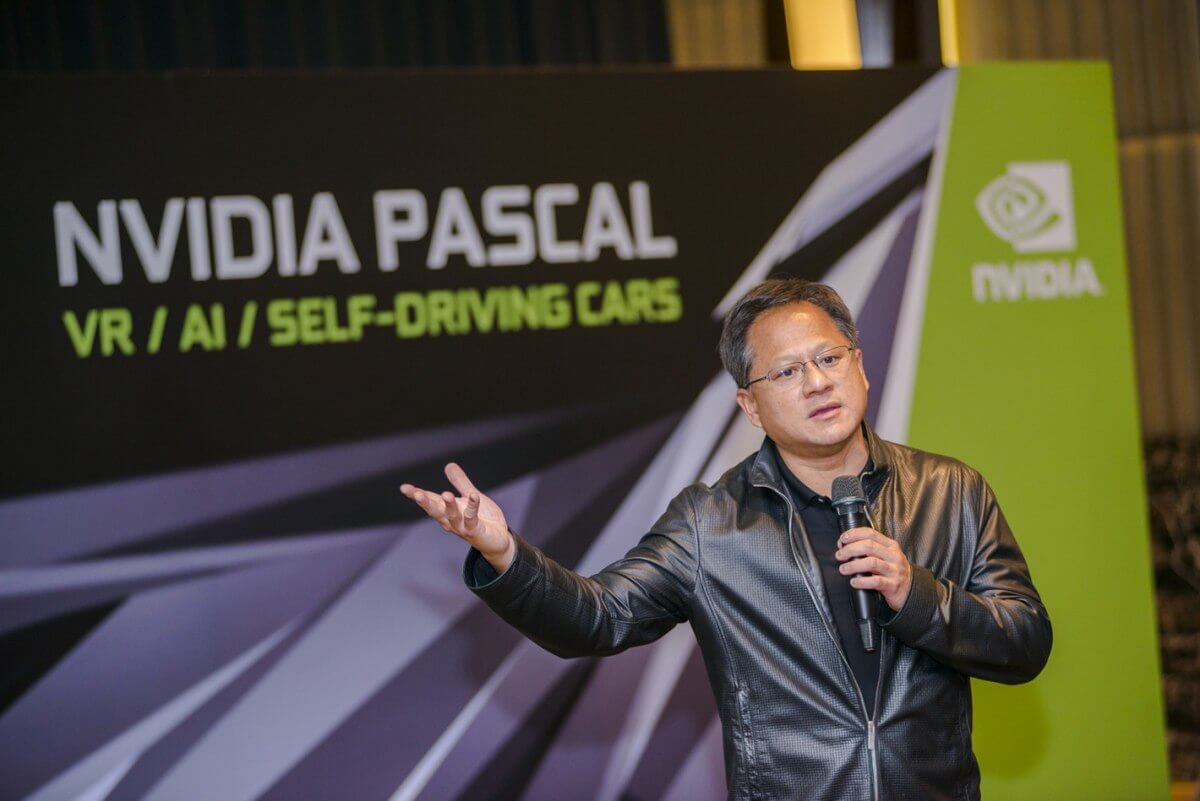Business
CEO Spotlight: Nvidia’s Jensen Huang
Huang’s work ethic, strategic execution, and vision continue to propel Nvidia at the top of its industry.

Jensen Huang has a tattoo of his company’s logo after Nvidia’s stock price hit $100. He described the process of getting inked as too painful. Now, he has to think of another challenge as his company’s stock price surged to $200. Here is how Huang is pushing Nvidia to historic levels.
Brief background
Jen-Hsun “Jensen” Huang co-founded Nvidia in 1993 with Chris Malachowsky and Curtis Priem. Huang has been the company’s president and CEO ever since while Malachowsky now serves as a senior technology executive.
Born in Taiwan on February 17, 1963, Huang moved to Thailand with his family years after his birth. He studied in the U.S. with his brother. Jensen graduated with a degree in Engineering from the Oregon State University. He later received his Master of Science degree at Stanford University.
The 54-year-old entrepreneur and businessman is married with two children, namely Madison and Spencer. Ranked 156th in the Forbes’ 400 richest in America list, Huang is also the 61st richest person in the tech industry. His estimated net worth of $4.9 billion puts him at number 272 in the list of billionaires in the U.S. and number 745 in the world rankings.
Life at Nvidia
Nvidia came from the words “Next Version.” A desperate word search containing the letters N and V led to the Latin word “invidia” which means “envy.” With a starting capital of just $40,000, the company was born in 1933 in Sunnyvale, California. The founders believed that the next big thing would be graphics-based computing.
Huang recalled that, like most startups, Nvidia had its challenges in the beginning. The office they rented was small; they even shared a bathroom with another company. Now, Nvidia’s headquarter is a 500,000-square-foot structure called Endeavor, the company’s answer to Apple’s massive main office six miles away.
Back in the day, the launch of NV1 it received a lukewarm response from the public. Nvidia’s first product, a multimedia card for personal computers, failed to make profits but that did not stop the company from improving its offers. In 1999, Nvidia hit gold after a successful IPO on the Nasdaq.
That same year, it also released the GeForce 256, considered as the world’s first Graphics Processing Unit (GPU). Seven years after, Nvidia launched CUDA which expanded GPU out of the realm of video games, making it possible to use in other areas of computing. In 2014, Tegra chips were repositioned for automotive use. The company never looked back since then.
With Tegra, Nvidia has opened avenues for revenue in the field of defense, energy, finance, and healthcare, among others. Its success prompted Mad Money host Jim Cramer to call Nvidia “one of the great companies of our time.”

Despite pressure from rivals Intel and AMD, Nvidia maintains its healthy lead in the GPU market. (Photo by NVIDIA Taiwan via Wikimedia Commons. CC BY 2.0)
Leadership style
Huang’s peers often describe him as a visionary. The company employs more than 2,000 people but Nvidia maintains its culture. In fact, Jensen has no real office in Endeavor as he prefers to move around all the time.
Aside from being a visionary, he is referred to as a thoughtful leader by the analysts and experts at the Harvard Business School, Booth Company, and Fortune. His co-workers put him on the same breath with other stalwarts in the tech industry such as Elon Musk and Jeff Bezos.
When the founders started Nvidia, no one knew that it would play a vital role in advancing Artificial Intelligence (AI) in the future. Fast forward to 2017, Huang vows to make AI more affordable. He believes driverless cars will be available by 2021 with the help of their Drive PX Pegasus supercomputer.
While the competition for autonomous cars heats up, Nvidia maintains its leadership status. Its authority in the field with of advanced graphics processors has led to its involvement in data centers, smart cars, infrastructure and industry automation. It has partnered with Tesla, Toyota, and Audi for self-driving technology.
While Nvidia makes AI chips for smartphones and other mobile devices, Huang insists it is not their focus. Now, Nvidia controls 70 percent of the GPU sector amid pressure from rivals Intel and AMD.
Fortune’s Businessperson of the Year
Huang was named Fortune’s Businessperson of the Year and with his accomplishments in 2017, he certainly deserves it, beating other formidable names in the industry such as Jamie Dimon of JPMorgan Chase, Marc Benioff of Salesforce and Amazon’s Jeff Bezos.
One of the criteria used in the ranking is the company’s revenue-making abilities on the long-term basis. Nvidia’s consistency in financial performance is mirrored in its rapid growth in the last two years when it grew profits 50 percent or better annually and its stock price skyrocketed from $30 to $200.
(Featured image by NVIDIA Taiwan via Wikimedia Commons. CC BY 2.0)

-

 Africa1 week ago
Africa1 week agoForeign Investor Activity in Morocco’s Equity Market in 2024
-

 Markets2 weeks ago
Markets2 weeks agoCotton Prices Firm as Demand Lags and Global Production Outlook Improves
-

 Biotech5 days ago
Biotech5 days agoJohnson & Johnson’s Tecvayli Combo Shows Breakthrough Results in Multiple Myeloma
-

 Impact Investing2 weeks ago
Impact Investing2 weeks agoEU Drops 2029 Gas Boilers Ban but Ends Incentives from 2025 in Shift Toward Cleaner Heating






















You must be logged in to post a comment Login